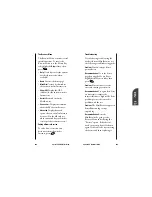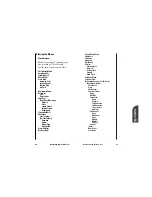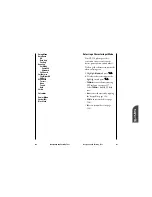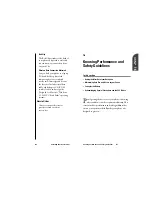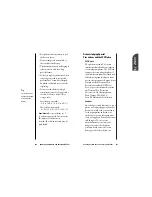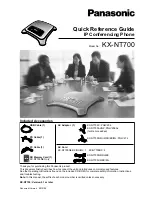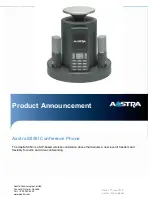
Knowing Performance and Safety Guidelines
137
16
Performance
and Safety
136
Knowing Performance and Safety Guidelines
Maintaining Safe Use of and Access
to your Phone
FAILURE TO FOLLOW THE
INSTRUCTIONS OUTLINED IN
THIS SECTION MAY LEAD TO
SERIOUS PERSONAL INJURY
AND POSSIBLE PROPERTY
DAMAGE
Using your Phone While Driving
Talking on your phone while driving
is illegal in some states. Even where
it’s not, it can divert your attention
from driving. Remember that safety
always comes first.
When using your phone in the car:
•
Get to know your phone and its
features, such as speed dial and
redial.
•
When available, use a hands-free
device.
•
Position your phone within easy
reach.
•
Let the person you are speaking to
know you are driving; if necessary,
suspend the call in heavy traffic or
hazardous weather conditions.
•
Do not take notes or look up
phone numbers while driving.
Tip:
If you really need to
use your phone
while you’re driving,
use a headset or
Speed Dialing.
updated standard in a regulation. In
August 1996, the FCC adopted
hybrid standard consisting of the
existing ANSI/IEEE standard and the
guidelines published by the National
Council of Radiation Protection and
Measurements (NCRP).
Maintaining your Phone’s
Peak Performance
There are several simple guidelines
to operating your phone properly
and maintaining safe, satisfactory
service.
•
Hold the phone with the antenna
up and over your shoulder.
•
Try not to ever hold, bend or twist
the phone antenna.
•
Don’t use the phone if the antenna
is damaged.
•
Speak directly into the
mouthpiece.
•
Avoid exposing your phone and
accessories to rain or liquid spills. If
your phone does get wet,
immediately turn the power off and
remove the battery. If it’s
inoperable, return it to your
wireless service provider.
Summary of Contents for SP 510
Page 1: ...SP 510 Phone User Guide ...

